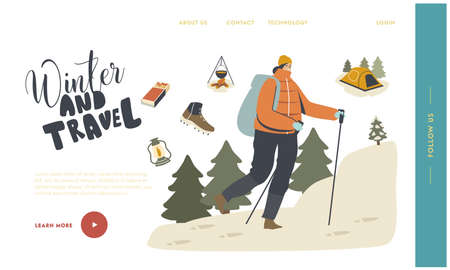1. Understanding the Layering System
If you want to stay warm, dry, and comfortable on cold-weather hikes in the US, mastering the art of layering is a must. The classic three-layer system—base layer, mid layer, and outer layer—is the gold standard for outdoor adventurers from Colorado’s Rockies to New Hampshire’s White Mountains. Each layer has its own unique job, and working together they keep you cozy no matter what Mother Nature throws your way.
The Three-Layer Principle Explained
| Layer | Main Purpose | Common Materials | Why It Matters |
|---|---|---|---|
| Base Layer | Moisture Management | Synthetic (polyester), Merino wool | Wicks sweat away from skin to help you stay dry and prevent chills. |
| Mid Layer | Insulation | Fleece, down, synthetic fill | Traps body heat to keep you warm even when temps drop. |
| Outer Layer (Shell) | Weather Protection | Waterproof/breathable fabrics (Gore-Tex, eVent) | Shields you from wind, rain, and snow while letting sweat escape. |
Why Each Layer Is Crucial on Cold Hikes
- Base Layer: Think of this as your next-to-skin comfort zone. A good base layer pulls sweat away so you don’t get clammy. In cold weather, staying dry is half the battle against feeling chilled.
- Mid Layer: This is your personal furnace. Whether it’s a puffy jacket or a thick fleece, the mid layer holds in heat while still allowing moisture to move outward.
- Outer Layer: When wind howls or snow starts falling, this layer keeps the elements out. A solid shell makes sure all your other layers can do their job without getting soaked or battered by the breeze.
Quick Tip for American Trails:
The weather can change fast—especially in places like the Pacific Northwest or Appalachian Mountains. Always bring all three layers even if it looks sunny at the trailhead!
Choosing the Right Base Layer
When it comes to cold-weather hikes, your base layer is your first line of defense against the chill. Picking the right one can make or break your outdoor adventure. The base layer sits right next to your skin, so it’s all about staying dry and comfortable, even when you’re working up a sweat.
Why Moisture-Wicking Matters
If you’ve ever hiked in cotton and ended up feeling clammy and cold, you know why moisture-wicking fabrics are non-negotiable. These materials pull sweat away from your skin, helping you stay warm and dry rather than shivery and damp. This is especially important in American climates where winter weather can be unpredictable—from snowy mountains in Colorado to chilly forests in the Pacific Northwest.
Fit: Snug but Not Tight
Your base layer should fit close to your body without cutting off circulation or restricting movement. A snug fit helps with moisture transfer and keeps heat close to your body. But don’t go too tight—comfort is key for long days on the trail.
Top Choices for Base Layers in the U.S.
| Material | Pros | Cons | Popular Brands |
|---|---|---|---|
| Merino Wool | Natural, odor-resistant, warm when wet, soft feel | Can be pricey, may wear out faster than synthetics | Smartwool, Icebreaker, Darn Tough |
| Synthetic Blends (Polyester, Nylon) | Affordable, quick-drying, durable, lightweight | May retain odors over time, not as soft as wool | Patagonia Capilene, Under Armour, REI Co-op |
| Cotton (Not Recommended) | Cushy feel when dry | Poor moisture management; gets cold and heavy when wet | N/A for base layers |
American Favorites: Merino Wool & Synthetic Blends
Across the U.S., hikers often reach for merino wool or synthetic blends for their base layers. Merino wool is a go-to for those looking for natural warmth and comfort—it’s perfect for multi-day trips or when you want something that won’t get stinky after hours on the trail. If you’re more focused on performance and budget, synthetic blends offer excellent moisture control and durability for all kinds of winter conditions.
Quick Tips for Picking Your Base Layer:
- Avoid cotton—it soaks up sweat and stays wet.
- Check labels for “moisture-wicking” or “quick-dry.”
- If you run cold, choose a slightly thicker merino wool; if you heat up fast, go lighter with synthetics.
- Packing for variable weather? Bring an extra base layer just in case—especially if you’re hiking far from help.

3. Insulating for Warmth: Finding Your Mid-Layer
When you’re hiking in cold weather, your mid-layer is the real MVP of warmth. The right insulating layer traps body heat while still letting moisture escape so you don’t get clammy as you move. Let’s break down the most popular mid-layer options and help you choose what works best for your next trail adventure.
Top Insulation Choices for Cold-Weather Hikes
| Type | Pros | Cons | Best For |
|---|---|---|---|
| Fleece | Lightweight, breathable, dries fast, affordable | Not windproof, can be bulky under a shell | Mild to cool conditions, high-output hikes |
| Down | Super warm for its weight, compresses small, long-lasting with care | Loses insulation when wet, pricier, not vegan-friendly | Cold and dry conditions, low-sweat activities |
| Synthetic Fill (e.g., PrimaLoft) | Insulates when wet, dries faster than down, often more affordable | Bulkier and heavier than down, may lose loft over time | Damp climates, unpredictable weather, budget-conscious hikers |
How to Adapt Your Layers on the Trail
The key to comfort during any hike is flexibility. Here’s how to make sure your insulation works with—not against—you:
- Start Cool: Begin your hike feeling slightly chilly; you’ll warm up quickly once you’re moving.
- Pit Stops Matter: As soon as you stop for a break or lunch, throw on an extra layer to trap heat before you start cooling off.
- Pack Smart: Bring more than one mid-layer option if possible—like a light fleece plus a packable down vest—so you can mix and match as conditions change.
- Ditch Dampness: If your mid-layer gets sweaty or damp, swap it out for a dry backup. Wet insulation zaps warmth fast.
- Tweak for Terrain: Heading uphill? You might want to shed your mid-layer early to avoid overheating. At exposed ridgelines or windy summits, add that insulation back ASAP.
Your Go-To Layering Strategy in a Nutshell
- Mild Cold: Lightweight fleece or thin synthetic pullover.
- Bitter Chill: Lofty down or synthetic jacket under a windproof shell.
- Misty Mornings/Rainy Days: Synthetic fill beats down in wet weather every time.
Quick Tip:
If you’re unsure which insulation to bring, check the forecast before heading out and always err on the side of bringing an extra layer. In America’s wild places—from the Rockies to the Appalachians—weather can shift fast!
4. Shielding From the Elements: Selecting an Outer Shell
When you’re out on a cold-weather hike, your outer shell is your main line of defense against rain, snow, and wind. Even if you’ve nailed your base and mid layers, without the right shell, you’ll get soaked or chilled fast. In the U.S., hikers know that weather can change in a flash—so choosing a solid outer shell is key.
Why You Need Windproof and Waterproof Jackets
The outer shell’s job is to keep wind and water out while letting sweat escape. A good shell keeps you dry from both outside moisture (like rain or snow) and from your own body heat. This helps prevent hypothermia and keeps your hike comfortable, no matter what Mother Nature throws at you.
Key Features U.S. Hikers Love
| Feature | Why It Matters |
|---|---|
| Pit Zips | These underarm zippers help you dump heat fast without taking off your jacket—a lifesaver when you’re working hard uphill. |
| Adjustable Hood | Lets you cinch tight during storms or loosen up for better airflow. Some hoods even fit over helmets for climbing or snowshoeing trips. |
| Pocket Placement | Pockets placed higher up make them accessible even when wearing a backpack hipbelt. |
| Packability | Lightweight shells pack down small so they don’t hog space in your pack—perfect for variable weather. |
| Taped Seams & Durable Zippers | Keep water from sneaking in through tiny gaps, ensuring true waterproof protection. |
The Best Times to Use Your Outer Shell
Your shell isn’t just for heavy rain! Throw it on whenever there’s strong wind, wet snow, sleet, or light drizzle. Even on clear winter days, a shell can block biting winds on exposed ridges or summits. Remember: it’s smart to keep your shell handy in your backpack, even if the forecast looks good—weather in the mountains can turn quickly!
5. Extra Tips and Common Mistakes
Layering for Hands, Head, and Feet
When it comes to cold-weather hikes in the U.S., your extremities—hands, head, and feet—need just as much attention as your core. Here’s a quick guide on how to layer these areas effectively:
| Body Part | Best Practice | What to Avoid |
|---|---|---|
| Hands | Start with a thin liner glove (synthetic or merino), then add an insulated mitten or waterproof shell if it’s wet or windy. | Cotton gloves—they don’t insulate when wet. |
| Head | Wear a moisture-wicking beanie or balaclava. Add a windproof hat or hood if needed. | Avoid leaving your head uncovered—it’s a major source of heat loss. |
| Feet | Choose moisture-wicking socks (wool or synthetic). Layer with sock liners for extra warmth and blister prevention. Use waterproof boots in snow or slush. | Cotton socks—they trap moisture and can lead to cold feet or blisters. |
Avoiding Cotton: The “Cotton Kills” Rule
In American hiking culture, there’s a popular saying: “Cotton kills.” This is because cotton soaks up sweat and water but dries very slowly, making you much colder if the temperature drops. Always opt for synthetic or wool layers from head to toe—they keep you warm even if they get damp.
Adjusting Your Layering System on the Fly
The weather can change quickly on the trail. Don’t be afraid to stop and adjust your layers as needed. If you start sweating, shed a layer before you overheat; if you feel chilly, add one right away. Staying proactive helps you avoid getting too hot (which leads to sweat) or too cold (which can be dangerous).
Common Pitfalls to Avoid
- Overdressing at the Trailhead: You’ll warm up once you start moving. Begin slightly cool so you don’t overheat quickly.
- Ignoring Your Feet: Wet or cold feet can end a hike early. Bring spare socks and check for blisters often.
- Packing Only Heavy Layers: It’s better to have several light layers than one thick jacket—you get more control over your comfort.
- Neglecting Wind Protection: Even with good insulation, a strong wind can cut through your clothes fast. Always carry a windproof outer shell.
- Forgetting About Breathability: Waterproof layers are great, but make sure they’re also breathable so sweat doesn’t build up inside.
- No Backup Layers: Weather can turn unexpectedly. Pack an extra insulating layer just in case, especially for long day hikes or backcountry trips.
Your Quick-Check List Before Hitting the Trail
- Synthetic/wool base layers (no cotton)
- Liner and insulated gloves/mittens
- Warm hat/beanie + backup hood
- Socks + sock liners (all synthetic/wool)
- Windproof & waterproof shells
- An extra mid-layer packed away
Dressing smart is all about preparation and flexibility—layer up right, stay dry, and enjoy those brisk American trails!


